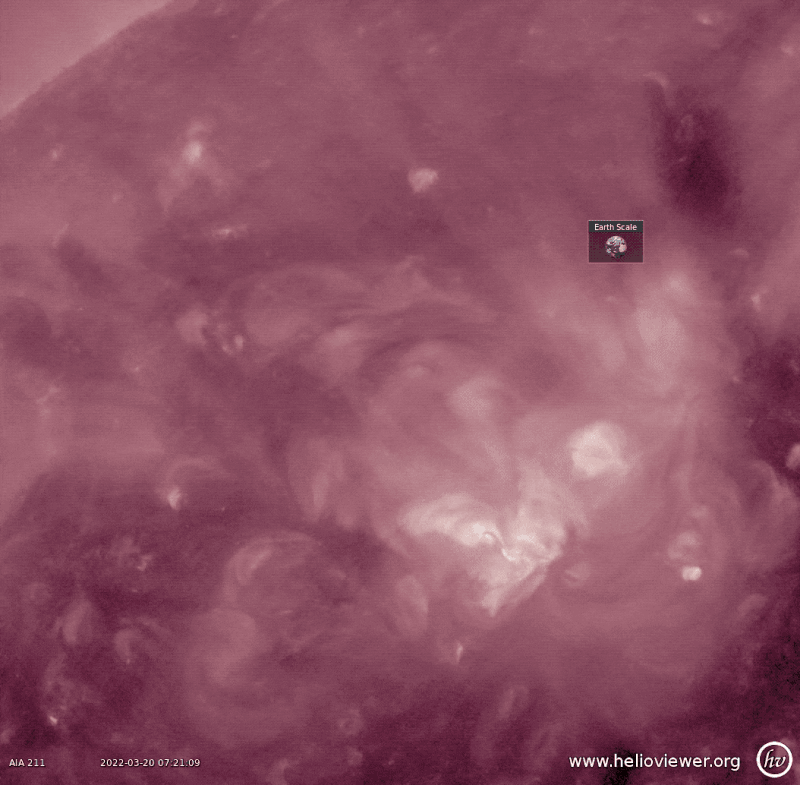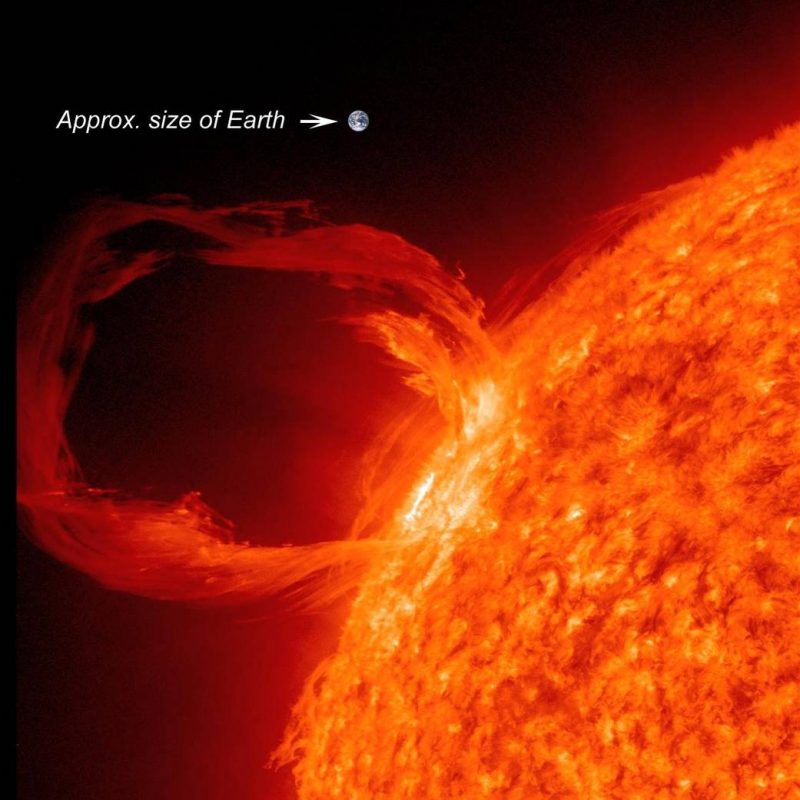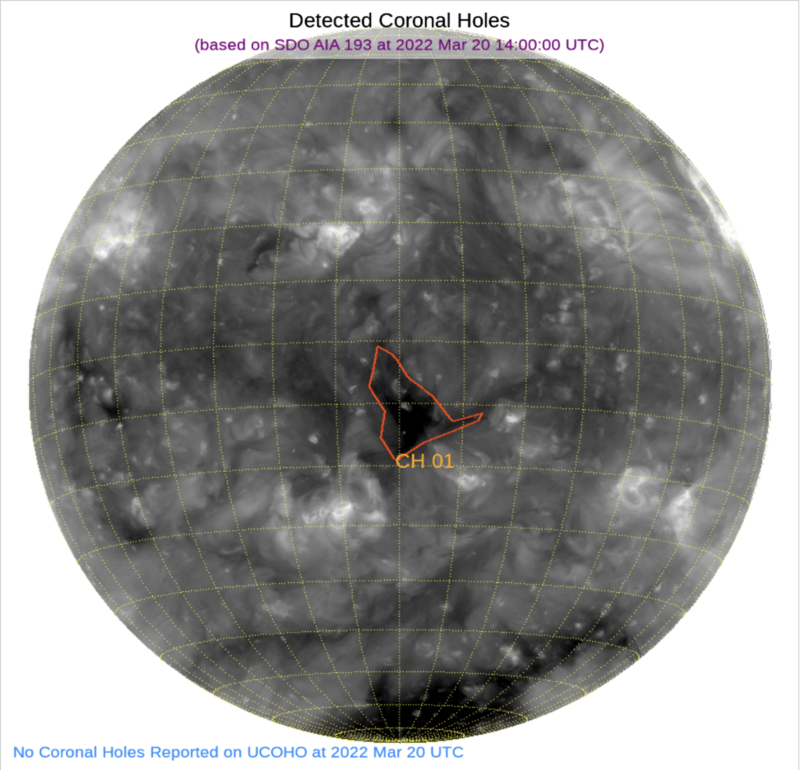
Another possible CME sideswipe coming
A CME is estimated to give Earth a glancing blow on March 23, 2022, with a possible uptick in auroral activity around that time. Sunspot region AR2971 launched a C4 solar flare and resulting CME at 7:45 UTC on March 20. As Spaceweather.com pointed out:
This will be the 3rd time in the past week that a CME has almost landed a direct hit.
This eruption also caused a filament to be ejected from the sun. Solar filaments are long ropes of solar material held down by magnetic fields. They’re the same pink-red structures you see around a darkened moon during total solar eclipses. In this case, the magnetic fields shifted in such a way that the filament detached from the sun, sending a CME our way.
Filaments on the sun can exist by themselves, or they can lie over a sunspot region. Here the filament was draped over region AR2971, giving us an especially energetic explosion.

A March 20 EIT wave
During the March 20 solar flare and filament release, the eruption also created an EIT wave. EIT stands for Extreme-ultraviolet Imaging Telescope, an instrument aboard the SOHO sun observatory. This instrument first observed these waves, which are blast waves that ripple through the solar corona, the outermost part of the sun’s atmosphere. They’re visible only in wavelengths of extreme ultraviolet light.
If you look closely at the animated gif above, you can the wave moving away from the eruption. You can also see dark pieces of material leaving the area with the bright flash from the flare. This dark material is the filament, which is much cooler than the surrounding atmosphere, the corona. This makes the material appear darker.
The eruption also produced a Type II radio burst. These blasts of radio waves are most associated with CMEs and shock waves through the corona.
The CME itself is not expected to provide much of a disturbance to Earth’s magnetic field but it may be combined with the arrival of high-speed solar wind from a coronal hole. Together the two may create a minor geomagnetic disturbance or at least some heightened activity. This means the possibility for some heightened aurora from high latitudes and lots of beautiful pictures from aurora watchers.

Today’s sun

Bottom line: Sun activity for the week of March 21, 2022. For the third time in a week, a CME may give our planet a glancing blow, with a possible uptick in auroras.
The post Sun activity: 3rd CME sideswipe in a week first appeared on EarthSky.
0 Commentaires